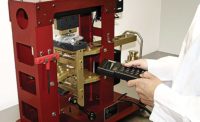Not all numbers are the same
Injuries to the hands and fingers account for more than 27 percent of all workplace injuries, according to a U.S. Department of Labor study. Based on OSHA estimates, just one cut or laceration can cost a company as much as $36,000.
Ideally, employers should eliminate cut and puncture hazards at the source, either through engineering or administrative controls. When these measures can’t completely eliminate the hazard, being prepared means selecting the proper hand protection. Manufacturer data on cut and puncture resistance, used properly, can empower you to choose hand protection with the best combination of performance and protection.
“What’s there to know?” you ask. “A Cut Level 5 is better than a Cut Level 4, right?”
Well, sometimes.
There are two major standards for measuring cut and laceration resistance: the ANSI 105:2011 Standard, widely used in America, and the EN388:2003 Standard, prevalent in Europe. Since both standards use different testing methods, it is important to stress there is no direct correlation between the two. Each test is performed based on its own criteria and there is no mathematical conversion between the test results.
To further complicate, the ANSI and EN standards each utilize two different test methods, meaning the cut level could be determined by any one of four different tests.
ASTM test methods
The ANSI 105:2011 Standard specifies that gloves should be tested for cut resistance using the ASTM F1790-97 or ASTM F1790-05 test methods. In both of these methods, weight is applied to a straight edge razorblade, which is drawn back and forth across a swatch of the testing material. In the F1790-97 method, the razor blade travels 25 mm (1 in.), while in the F1790-05 method, the blade travels only 20 mm (.8 in.). The weight on the blade is gradually increased until the fabric breaks. The ANSI Cut Level for that material is determined by the weight on the blade at the moment the fabric breaks.
ANSI 105:2011 Standard
| Cut Level | Weight needed to cut through material |
| 0 | < 200 g |
| 1 | ≥ 200 g |
| 2 | ≥ 500 g |
| 3 | ≥ 1000 g |
| 4 | ≥ 1500 g |
| 5 | ≥ 3500 g |
Coup test
The EN388:2003 Standard specifies that gloves should be tested for cut resistance using what is called a “coup test.” In a coup test, a rotating circular blade with a fixed weight of 5 Newtons (1.12 lb.) moves back and forth across the fabric sample. Cut level in the EN388 standard is determined by how well the material performs versus a standard reference material. The reference material is made of cotton canvas with a weight of 540g/m² (16 oz/yd²), the rough equivalent of a double-palm textile glove. Cut level is based on an index, or ratio, of the number of cycles it takes the blade to break through each material. For instance, if the blade takes 2 cycles to cut through the reference material, and 10 cycles to break the testing material, that material would have a cut index of 5, and a cut level of 3.
EN388:2003 Standard
| Cut Level | Cut Index |
| 1 | 1.2 |
| 2 | 2.5 |
| 3 | 5 |
| 4 | 10 |
| 5 | 20 |
The coup test can become unreliable when testing materials with especially high cut resistance. Gloves constructed with glass or steel generally fall into this category. In these situations, the rotating blade can become blunted over the course of the testing, leading to inconsistent results.
For this reason, the EN388 Standard allows for highly cut resistant materials to be tested using the ISO 13997 test method. ISO 13997 testing is similar to ASTM F1790 testing, in that a straight blade is drawn across a piece of fabric as increasing force is applied to the blade. Cut Level is measured by the weight required to break through the material. ISO 13997 testing is not mandatory, but is generally accepted to be more accurate than coup testing for highly cut resistant materials.
EN ISO 13997 Performance Levels
| Cut Level | EN ISO 13997 Cutting Load |
| 4 | ≥13 N |
| 5 | ≥ 22 N |
Puncture resistance
When employees are working around hazards that pose a risk of puncture, it is important to outfit them in hand protection that has been tested for puncture resistance. Both the ANSI and EN standards for puncture resistance use the same test, in which a steel stylus punctures a test specimen held on a retaining device. The stylus has a tip with a diameter of 1 mm, and resembles a nail or pencil more than it does a hypodermic needle. The force on the stylus at the moment of puncture determines the puncture level. Although the test is the same for both ANSI and EN standards, each standard uses different weights to determine puncture level.
Puncture Resistance Levels
| Level ANSI 105:2011 | EN 388:2003 |
| 0 | < 10 N < 20 N |
| 1 | ≥10 N ≥ 20 N |
| 2 | ≥ 20 N ≥ 60 N |
| 3 | ≥ 60 N ≥ 100 N |
| 4 | ≥ 100 N ≥ 150 N |
| 5 | ≥ 150 N n/a |
A complex equation
Choosing the right glove for the task is about much more than just the cut and puncture level. An understanding of the various test methods and exactly what the test data mean can give you an edge on selecting the best hand protection for your workers. Even so, one should not rely on the data alone. Fit, comfort, dexterity and grip all need to factor into the complex equation of determining the hand protection that best suits your operation.





